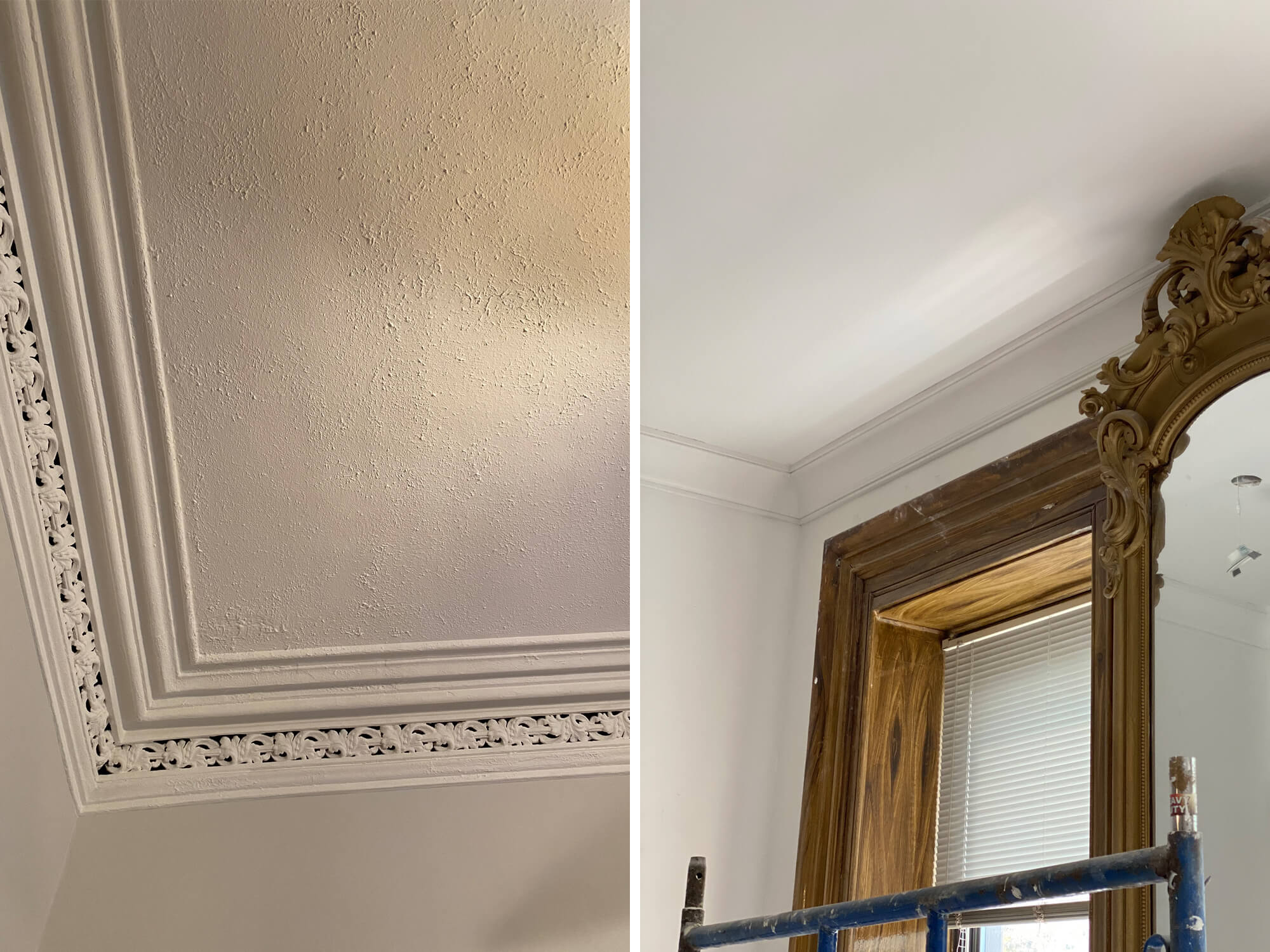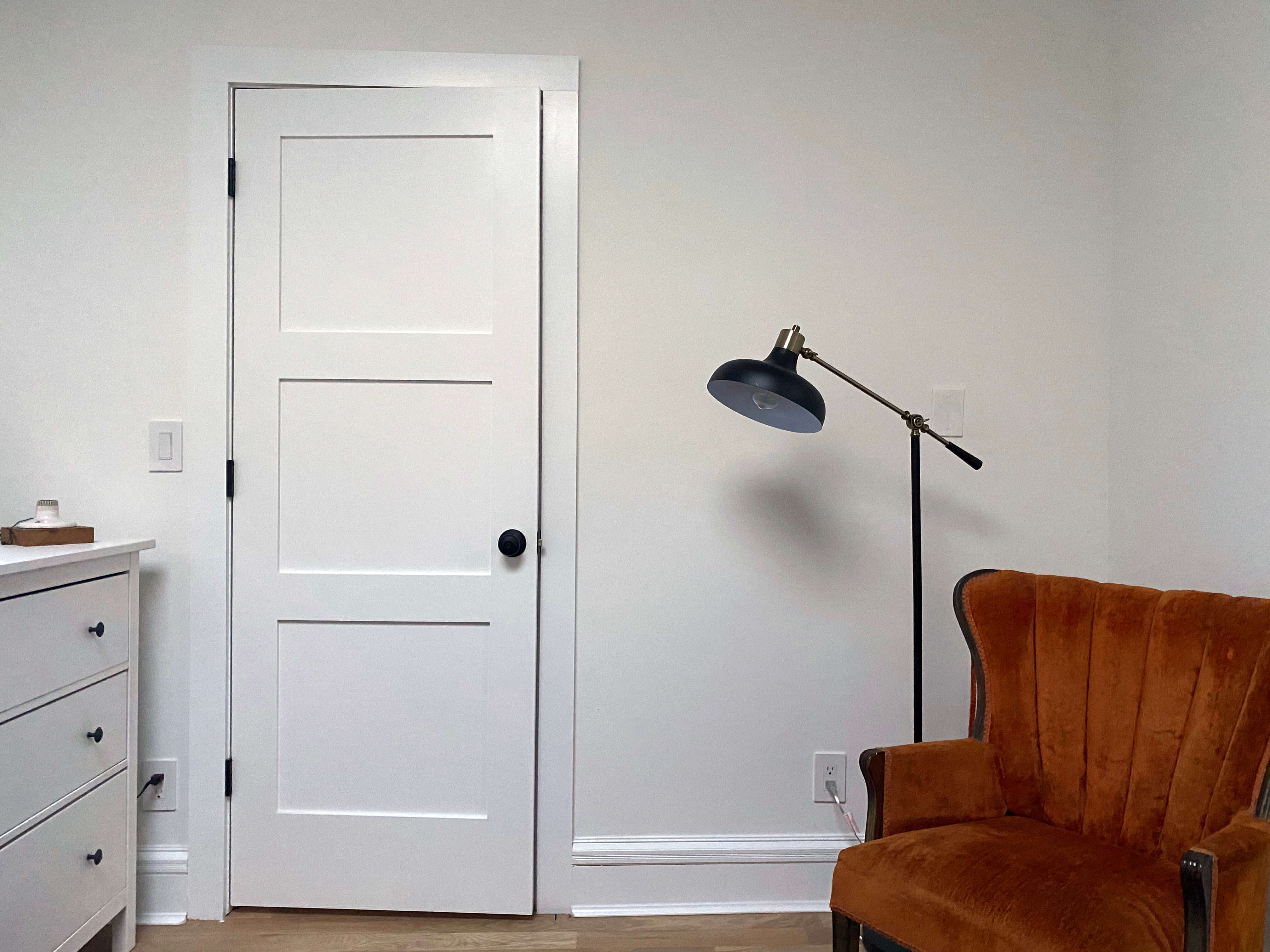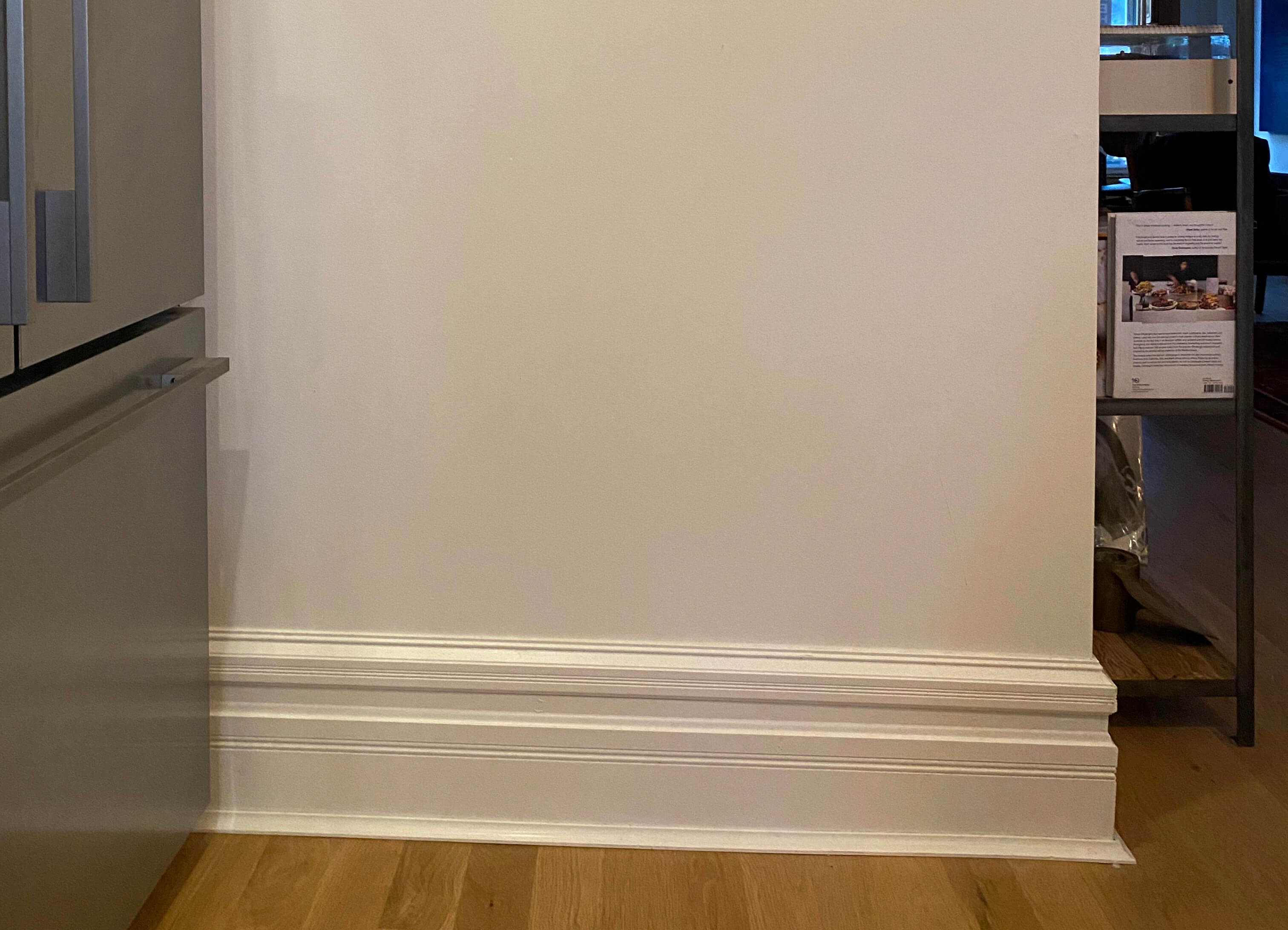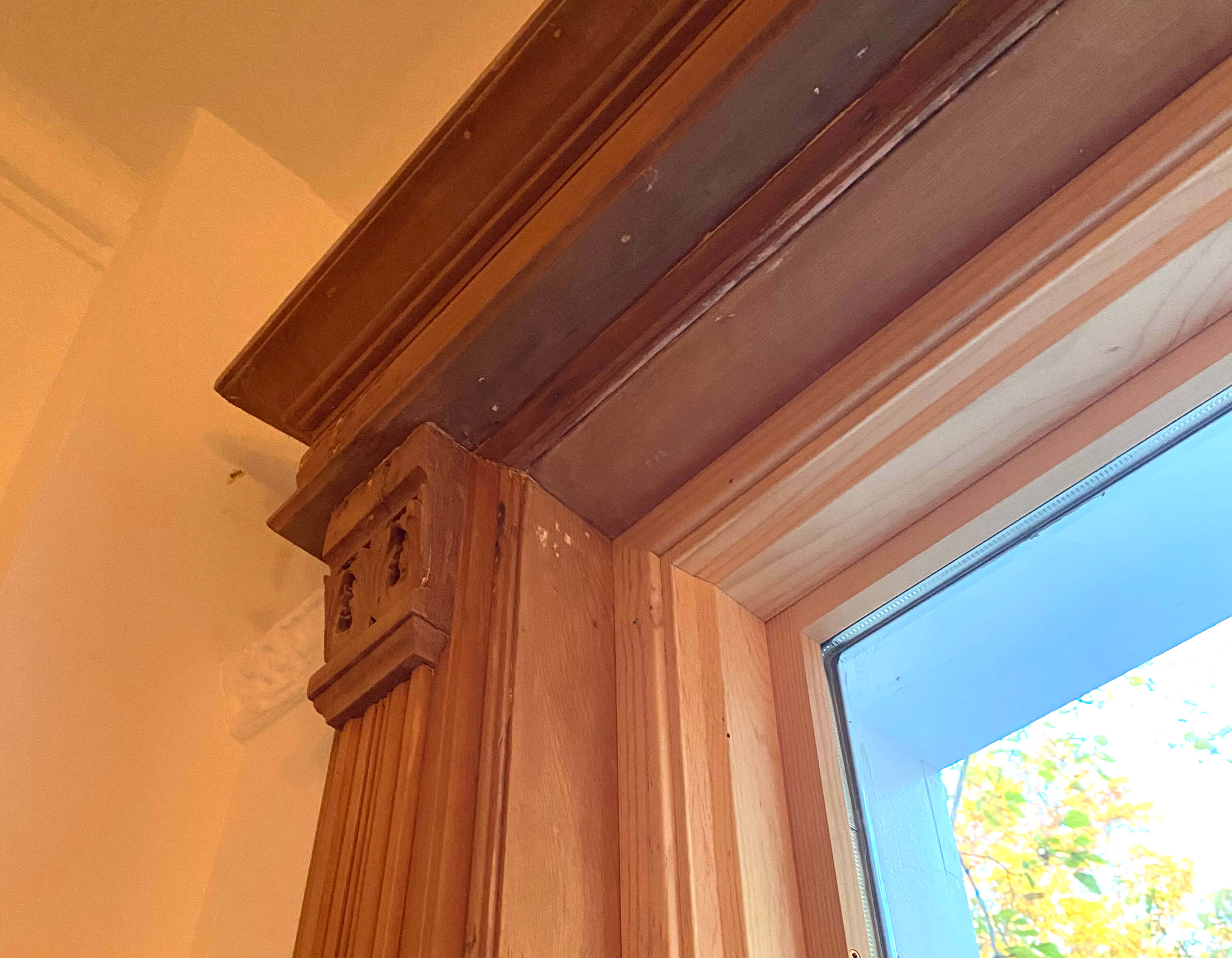Brownstone Boys: A Quick Guide to Restoring Finishing Details, Trim and Molding
Trim and molding aren’t just the icing on the cake, they’re an important architectural feature of your home and can serve to protect the walls from damage.

Decorative moulding is a cheap and easy way to spruce up any space
Editor’s note: Welcome to the 85th installment of Brownstone Boys Reno, a reader renovation diary about renovating a brownstone in Bed Stuy. See the first one here. They also blog at www.thebrownstoneboys.com.
Trim and molding aren’t just the icing on the cake, they’re an important architectural feature of your home and can serve to protect the walls from damage. Moldings can turn an unfinished renovation into an almost complete space. They can also do an important job of covering the guts of doors and windows after they are installed.
It can be a confusing puzzle to put together, especially if you have original wood or plaster moldings. We thought we would share our tips and tricks to creating a molding plan that will take your renovation from incomplete to polished.

Crown Molding
The original reason for most moldings was to cover up gaps where building materials come together. Over time, they became more ornate but their original purpose still holds true. Crown moldings can bring a feeling of elegance to a room. It can be a simple feature or an ornate feature. There are many styles but we like to use a cove that can round out the transition where the wall meets the ceiling, with additional features above and below it. Some crown moldings consist of multiple pieces built up to achieve a larger and more ornate look. The height of the ceiling and proportions of the room usually determine how big to go. Many crown moldings were traditionally made of plaster, and many still are, but it’s an expensive (but beautiful) option. A similar look can usually be accomplished with wood. More on that below.

Baseboard Molding
Baseboards are installed partly for practical as well as aesthetic reasons. Just as crown molding hides the area where walls meet the ceiling, baseboards hide the joint where walls meet the floor, which might otherwise be unsightly. But baseboards also serve a very necessary function in protecting plaster walls from getting kicked or scuffed. They come in varying heights and details. Baseboard trim is usually much less ornate than crown molding, though in modern houses both can be starkly simple. Baseboard molding comes in a large variety of styles, such as smooth, beaded, ornate and many more. Many traditional baseboards consist of multiple pieces, such as a flat board, sometimes with beading, and a base cap on top that is usually more ornate. Simple modern baseboards may even just stop at the flat board. The height usually depends on the height of the ceilings. We like to do baseboards in the 3-inch to 5-inch range for low to medium height ceilings and 7-inch to 9-inch range for high ceilings (and more ornate details).
Picture Frame and Rail Molding
Picture frame molding can instantly and inexpensively up the character factor in a room. It adds a touch of elegance to a space. The picture rail is a nod to tradition and history and was used to hang wall decor to avoid creating holes in plaster walls. This type of molding will always curb a modern style to traditional. We like to use a low profile wall molding to bring in some character but not make things too bulky.

Door and Window Casing
Like other types of molding, casings were originally used to cover the gaps between the plaster wall and the door or window. It’s still used for that, but now to most people a home just wouldn’t be complete without them. Again, you need to consider the room’s proportions to choose the size and style. You’ll also need to measure how much space there is around your doors and windows. In New York, space is tight and they may end up close to one another or a wall. You should consider the space required for the molding to understand how big you can go. Usually the door trim will extend all the way around the door and to the floor. Sometimes a plinth is used as a base to the casing at the floor. The baseboard will then terminate at the casings or plinth. At the top corners, and sometimes even on the sides, a decorative rosette can be used.
Matching Original Molding
One of the things that usually draws people to historic homes is their original moldings. Rather than rip it all out and replace it, to keep a home’s original charm you will want to restore it. But if some are damaged or if you move a wall or two, you may need more.
What to do will depend on which molding you need to replicate. Typically, original baseboards and door and window casings are wood. It will likely be impossible to find original molding off the shelf. You can find a close approximation if it, or you can choose to have a millworker re-create the originals. This is not that much more expensive if you go to the right place. Many of the wood product shops in New York even have the knives (the tool used to give a piece of wood the exact profile of your molding) on hand to match the more popular styles in local homes. If they don’t, they can make it for a small fee. Then it’s just a matter of paying for the wood to be cut.

Original crown molding is likely made of plaster. Fixing or re-creating damaged sections will require a skilled plaster craftsperson to come into your home to spend many hours restoring them. It can be expensive work, but the result will be beautiful. Once completed you will look at it every day and be glad you did it!
Finally, something to consider is that all the trim in a room should be part of the same family, with similar details and proportions. If you have elaborate crown molding and very simple door casings, for example, it’s not going to feel right. All moldings should be in proportion to the room size and each other.
Trim and moldings serve an important purpose and are part of the architectural detail of your home. They hide the unsightly gaps between building materials and protect walls and plaster from damage, all while adding character and elegance to a room. Whether you are creating your molding plan from scratch or restoring originals, you’ll appreciate putting some thought into the plan.
[Photos by Brownstone Boys unless noted otherwise]
Related Stories
- Brownstone Boys: Our Stoop Makeover Is Nearly Complete
- Brownstone Boys: Finishing a Basement
- Brownstone Boys: How to Strip Paint Off a Beautiful Marble Mantel
Email tips@brownstoner.com with further comments, questions or tips. Follow Brownstoner on Twitter and Instagram, and like us on Facebook.





What's Your Take? Leave a Comment